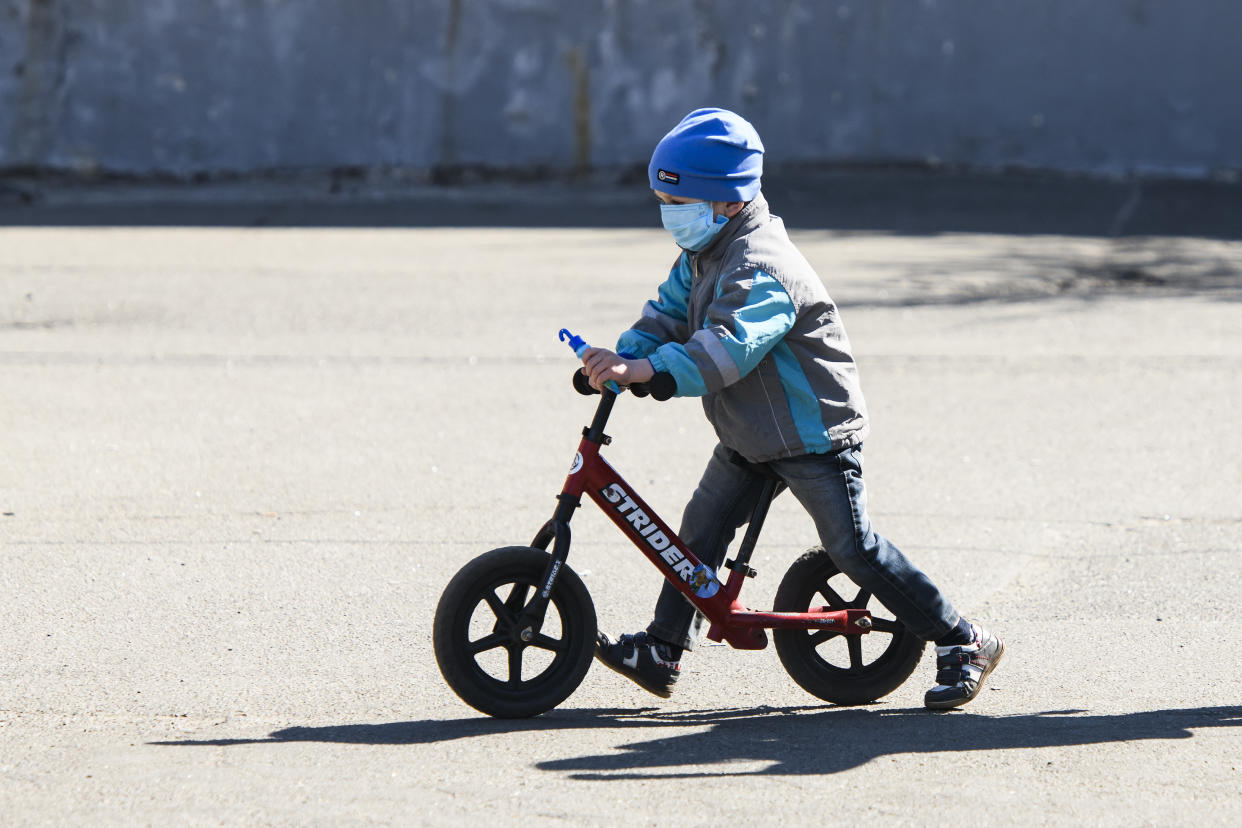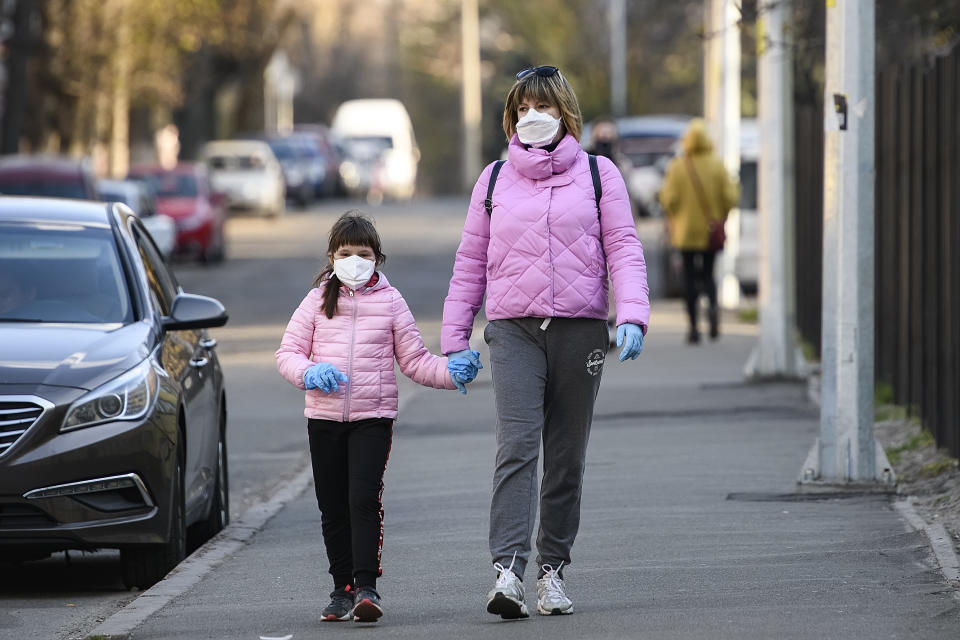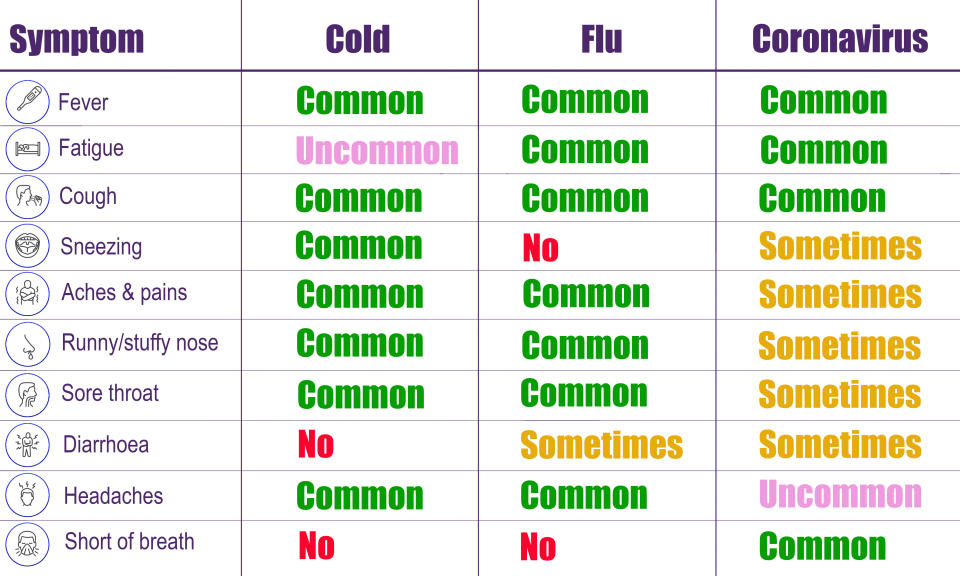Coronavirus: Closing schools has a ‘marginal impact’, scientists discover

Closing schools may have a “marginal impact” in combating the coronavirus outbreak, research suggests.
Schools, colleges and nurseries in the UK shut their doors indefinitely after the final bell on 20 March.
While the vast majority of deaths have occurred in the elderly or already ill, children can pass the infection to the vulnerable, where it may trigger a respiratory disease called COVID-19.
To uncover the benefits of the government’s drastic move, scientists from University College London (UCL) looked at 16 studies investigating the benefits of school closures for several coronavirus strains.
The circulating strain is one of seven that are known to infect humans. Others include severe acute respiratory syndrome (Sars) and Middle East respiratory syndrome (Mers).
Results suggest closing schools has only “small effects” in combating highly-infectious pathogens where “children are not the main drivers of infection”, like the coronavirus.
Experts largely welcomed the “good quality research”, with one calling for schools to “reopen as soon as practicable”.
Another pointed out while closing schools alone may have limited effectiveness, the move is combined with extreme social distancing during the UK’s lockdown.

The coronavirus is thought to have emerged at a seafood and live animal market in the Chinese city Wuhan, capital of Hubei province, at the end of last year.
It has since spread into more than 180 countries across every inhabited continent.
Latest coronavirus news, updates and advice
Live: Follow all the latest updates from the UK and around the world
Fact-checker: The number of COVID-19 cases in your local area
6 charts and maps that explain how COVID-19 is spreading
Since the outbreak was identified, more than 1.3 million cases have been confirmed, of whom more than 285,400 have “recovered”, according to Johns Hopkins University.
Incidences have been plateauing in China since the end of February, and the US and Europe are now the worst-hit areas.
The UK has had more than 52,200 confirmed cases and over 5,300 deaths so far.
Globally, the death toll has exceeded 75,900.
Coronavirus: ‘The benefit of school closures is limited’
As of 18 March, 107 countries worldwide had shut schools in an attempt to combat the coronavirus pandemic.
“We know from previous studies that school closures are likely to have the greatest effect if the virus has low transmissibility and attack rates are higher in children,” said UCL study author Professor Russell Viner.
“This is the opposite of COVID-19.
“Data on the benefit of school closures in the COVID-19 outbreak is limited but what we know shows their impact is likely to be only small compared to other infection control measures, such as case isolation, and is only effective when other social isolating measures are adhered to.
“Additionally, the costs of national school closures are high – children’s education is damaged and their mental health may suffer, family finances are affected, key workers may need to stay home to look after children and vulnerable children may suffer most.
“With nearly 90% of the world’s students (more than a billion and a half of young people) out of school, more data and robust modelling studies are urgently needed to help us identify how countries can, in time, safely return students to education.”

Closing schools did ‘not generally support’ the fight against Sars
Many experts were sceptical about the decision to close schools, arguing children did not appear to be driving coronavirus’ transmission.
With Britons being told to work from home if they can, some experts worried elderly grandparents may be called upon to provide childcare.
The UCL research found school closures in in China, Hong Kong and Singapore during Sars were “not generally supported”.
A COVID-19 model suggests keeping children at home will reduce the total number of deaths in the UK by between 2% and 4%.
School closures have been shown to slow flu outbreaks, however, the UCL scientists argued the two viruses cannot be directly compared.
COVID-19 is thought to have a high basic reproduction number, which could make school closures even less suitable.
The basic reproduction number is the number of people a patient statistically goes on to infect.
For example, if it is is three, every patient statistically infects three others.
In mid-February, scientists from the London School of Hygiene & Tropical Medicine estimated the coronavirus’ basic reproduction number fluctuated between 1.5 and 4.5 before travel restrictions were introduced in Wuhan, stressing “substantial uncertainty”.
Professor David Heymann, from the London School of Hygiene & Tropical Medicine, previously told Yahoo UK basic reproduction numbers “change daily as new information comes in”.
Nevertheless, the UCL scientists concluded “school closures have only small effects in infections with a high reproductive number, such as COVID-19”.

Government faces ‘hard questions about when and how to open schools’
“This is an important study that confirms what many of us suspected, namely the public health benefits of school closures were not proportionate to the social and economic costs imposed on children and their families,” said Professor Robert Dingwall from Nottingham Trent University.
“It also underlines how the assumptions used in modelling the COVID-19 pandemic may rest on very flimsy foundations in terms of scientific evidence.
“This work suggests UK schools could, and should, begin to reopen as soon as practicable after the initial wave of cases has passed through.
“The biggest risk may come from gatherings of parents, grandparents and other carers at the school gate rather than anything that happens inside.”
Dr Samantha Brooks, from King’s College London, stressed “even when children are not at school, it should not be assumed that means social distancing is automatically assured”.
Scientists from King’s recently looked at studies investigating whether children continued to mix when schools were closed during infectious outbreaks.
All 19 studies suggested the youngsters still left their home or were cared for by people they did not live with.
Professor Neil Ferguson, from Imperial College London, however, supported the decision to close schools.
His models on how the coronavirus could progress was a key influencer in the government’s response to the outbreak.
“While school closure as a measure on its own is predicted to have a limited effectiveness in controlling COVID-19 transmission, when combined with intense social distancing it plays an important role in severing remaining contacts between households and thus ensuring transmission declines,” said Professor Ferguson.
“While this new paper reviews some of the modelling our group undertook of school closure for less intensive mitigation, it did not include our results for school closure in combination with other lockdown measures.”
Dr Charlotte Jackson, from UCL, was also more optimistic about the effect school closures could have.
Speaking when schools were shut, she said: “Closing schools aims to reduce contact between children, reducing the risk of them being infected and also of them passing the infection on to people in other age groups.
“The idea is this will slow down transmission, so the outbreak takes longer and has a lower peak.
“There are also operational considerations. It is difficult to keep schools open if many teachers are unable to come to work or if children are ill or kept home by concerned parents.”
Professor Viner argued the UK government has to “ask hard questions about when and how to open schools”.
“Interventions in schools, such as closing playgrounds, keeping students in constant class groups/classrooms; increasing spacing between students in classes, reducing the school week and staggering school start and break times across years or classes, should be considered, if restrictive social distancing policies are to be implemented for long periods of time”, he said.

What is the coronavirus?
The coronavirus tends to cause flu-like symptoms, including fever, cough and slight breathlessness.
It mainly spreads face-to-face via infected droplets expelled in a cough or sneeze.
There is also evidence it may be transmitted in faeces and can survive on surfaces.
In severe cases, pneumonia can come about if the infection spreads to the air sacs in the lungs.
This causes them to become inflamed and filled with fluid or pus.
The lungs then struggle to draw in air, resulting in reduced oxygen in the bloodstream and a build-up of carbon dioxide.
The coronavirus has no “set” treatment, with most patients naturally fighting off the infection.
Those requiring hospitalisation are offered “supportive care”, like ventilation, while their immune system gets to work.
Officials urge people ward off the coronavirus by washing their hands regularly and maintaining social distancing.




